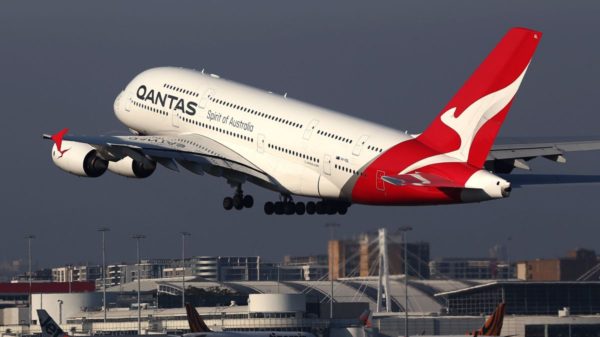According to the Communications Commission of Kenya (CCK) broadband subscriptions increased 4.14 percent to 131,829, although broadband subscriptions represented only 2.14 percent of the total internet subscribers in the country.
International connectivity bandwidth increased by 3.15 percent from 51,319.35 megabits per second (Mbps) in the previous period to 52,938 Mbps during the period under review. The total available bandwidth in the country was recorded as 5,261,919Mbps during the period under review.
Although the international available bandwidth has increased more than 25-fold, its usage remains very low with only 1.01 percent of it being utilised.
“This indicates that a lot of potential still lies in this sub-sector and initiatives towards formulating policies and projects that encourage the uptake of this capacity are required,” CCK said in a statement.
The CCK report revealed that mobile traffic declined to 6.7 billion minutes from the 7.09 billion minutes recorded in the previous quarter, representing a 5.5 percent drop in voice traffic.
Similarly, minutes of use for each subscriber per month declined 10.53 percent to 79.9 down from the 89.3 minutes recorded between July to September 2011 and the number of SMS messages sent from each subscriber per month also declined from 17.42 to 10.42, representing a decline of 38.52 percent.
A total of 902 million messages were sent down from 1.38 billion during the previous period, posting a decline of 34.85 per cent.
Although there was a decline in mobile traffic volumes as a result of increased tariffs during the period under review, it is expected that the coming periods may experience a reverse trend with operators keen on offering attractive promotional offerings likely to keep subscribers calling for longer periods.
The report further indicates that the number of mobile subscribers increased 5.99 percent to 28.08 million up from 26.49 million recorded and mobile penetration increased to 71.3 percent during the same period from 67.2 per cent recorded during the first quarter.
The mobile data/internet market continued to grow steadily with the number of mobile data subscriptions dominating the total internet subscriptions. The availability of this service on mobile phones and the popularity of social media such as Facebook, and Twitter could be some of the drivers of growth of this subsector.
Pre-paid subscriptions grew by 6.03 percent to 27.84 million subscriptions, while post-paid subscriptions grew by 1.31 percent to 236,436 subscriptions during the period. As has been the trend, the number of prepaid subscriptions represented 99 per cent of the total mobile subscriptions, characteristic generally typical to developing and emerging economies.
During the quarter under review, 89.1 percent of the population had access to mobile services compared to 84.5 percent recorded in the same period of the previous year. The increase in mobile subscriptions is an indication of operators’ determination to continue growing their subscriber base through tactful marketing approaches as a strategy towards customer acquisition.
The four mobile operators experienced gains in subscriptions with Safaricom recording the highest gains with 741,560 new subscriptions as compared to 593,177 new users recorded in the previous period. Essar Telecom (yuMobile) followed with 600,285 new subscriptions up from 46,742 recorded during the previous period, while Orange gained 144,208 new subscriptions from 16,686. Airtel Networks Ltd had 100,778 new subscriptions from 557,567.
An increase of 3.08 percent subscriptions in mobile money transfer was recorded from 18.4 million in the previous period to 18.9 million and the number of mobile money transfer subscriptions represents 70.35 percent of the total mobile subscriptions. The number of mobile money agents grew by 6.84 percent, from 44,922 during the previous period to 47,997.
The mobile money transfer continued to record positive growth during the period and the coming periods may be no exception as this service has become a medium of payment and provision of accessible and affordable banking services.
The total deposits made during the period under review were recorded as Sh176 billion, representing an average of Sh58 billion deposits made per month. This is a 54.94 percent increase from the Sh117 billion deposits made during the previous reporting period.
The main fixed lines (fixed terrestrial lines and fixed wireless) subscriptions recorded a downward trend of 20.24 percent during the period, from 355,493 fixed lines to 283,546, representing a fixed-line tele-density drop to 0.72 percent from 0.90 percent recorded during the previous period.
The fixed line network has been experiencing this negative growth due to vandalism of copper cables, high maintenance costs as well as fixed-mobile substitution could be behind the decline.
The total local letters sent over the same period declined by 4.75 percent from 20.57 million to 19.59 million. The stiff competition the sector faces from the telecommunication players has had a negative impact on the growth of this sector. For instance, the growth in internet usage volume during the period could be one of the indications that some of the postal traffic is being consumed by the telecommunication sector.
International incoming letters fell to 80,217 from 100,348 recorded, while international outgoing letters declined by 17.96 percent from 2.73 million to 2.24 million.
Revitalisation of this sector will depend on its ability to handle competitive pressure from the telecommunication sector as well as being innovative and responsive to customer expectations.
























